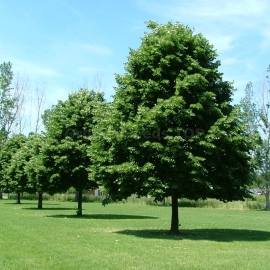






Organic Crimean linden Seeds (Tilia x euchlora K.Koch.)
1.14 €
A natural hybrid of unknown origin, with the participation of cordata and probably pubescent and Caucasian linden, one of the most decorative species, widespread.
-
Crimean linden or dark green / Tilia x euchlora K.Koch.
South-Eastern Europe (Crimea). Natural hybrid of unknown origin, with the participation of the cordata linden (T.cordata) and probably the pubescent linden (T.dasystyla) or Caucasian linden (T.caucasica). The tree is 12-16 (20) m in height. The crown is 10-12 m in diameter, dense, round-ovoid, low.
The bark is dark gray, light gray in young trees. Branches drooping or drooping, lower branches often dropping to the ground. Shoots are yellowish-green, smooth, not pubescent. Leaves 5-11 cm long and 6-12 cm wide, orbicular-ovate or rounded, inconsistently cordate at the base, shortly pointed, with a very short and narrow cusp, regularly along the edge, finely and finely serrate or serrate-toothed, dense, from above densely dark green, glossy shiny, glabrous, light green below, with barbs of hairs in the corners of the veins. Petioles are 2.5-5 cm long. In autumn, the leaves turn yellow and remain on the tree until late autumn.
Flowers are yellowish-white, fragrant, collected in the number of 3-7 pieces in semi-umbrellas 5-9 cm in length. Bracts up to 8 cm long and 1-2 cm wide. Nuts 0.6-0.8 cm in diameter, round-ovate, pointed, pubescent, pale brownish. It blooms in July, two weeks later than the cordate linden. Fruiting in August-September. It grows rather slowly. Relatively photophilous, highly drought-resistant and winter-hardy.
Resistant to pests and diseases. Hardy to minus 34 ° C. In culture since 1860. One of the most decorative types. Widely spread.
